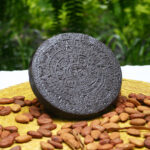
An Introduction to Mexico’s Traditional Dishes and Spices
At Sabores, we love food… especially Mexican food. We are passionate about showcasing everything Mexico City has to offer, and that’s why we run our Mexico City Food Tours. If you’d like to learn more about the tours we offer, please get in touch.
Otherwise, keep reading as we tell you a little bit about our country’s cuisine. We will also examine our country’s rather delicious food heritage. We will first look at the different spices of Mexico; then, we will delve into the dishes that mean so much to us!
The Spices of Mexico
Think of any spice. The likelihood is that Mexico discovered it, or it’s a staple in Mexican cuisine. From cumin and Mexican bay leaf to allspice and ancho chili powder — Mexico knows a thing or two about spices. Let’s learn about Mexico’s spices!
Mexican Bay Leaf
Mexican bay leaf is grown where you would expect: in Mexico. It’s traditionally used in Mexican cooking, soups, and stews and has a floral, herbal, and slightly bitter taste. If you have used the bay leaves traditionally used in European cooking, you’ll find Mexican bay softer and more mellow.
Vanilla Comes from Mexico
When thinking of spicy, your mind may not immediately go to vanilla. But this gentle and ever-popular spice is native to Mexico and South America.
In Mexico, vanilla is traditionally used in dishes like ice cream and cake. Still, it can also appear in savory dishes, adding to some of the complex flavor combinations our cuisine is so famous for.
Mexico Loves Cumin
While cumin was discovered initially in the Mediterranean, it plays a huge role in Mexican dishes. Cumin is a spice made from the seeds of the Cuminum Cyminum plant, and it has an earthy and warm flavor that we love in this part of the world!
Mexico is Synonymous with Chili
The chili plant is native to the South American Continent, and it’s estimated that chilis were first harvested roughly 8,000 years ago. It’s a popular addition to cornbread, quesadillas, nachos, and tacos. Chili is incredibly popular in Mexico, and it has since made its way worldwide, helping other nations develop a taste for spicy food!
While we use a vast range of different chilies here in Mexico, our habaneros are a must-try.
Cinnamon Perfectly Complements Mexican Cuisine
Cinnamon is a spice that arguably has its kind of heat that is different from chili. It is incredibly popular in Mexico.
Despite originating from Sri Lanka, Cinnamon is a crucial ingredient in Mexican cuisine — so much so that cinnamon exports to Mexico are worth $72.4 million. Cinnamon is usually used in desserts, soups, and stews.

Achiote — Mexico’s Answer to Parika
Achiote can also be referred to as annatto seeds. If you’ve never tasted achiote, its closest counterpart is probably paprika (which Mexicans also adore). Achiote is primarily used as a food colorant but also gives dishes an earthy and peppery taste if used in larger amounts.
Achiote is commonly made into achiote paste, consisting of grounded annatto seeds with added vinegar, garlic, oregano, cinnamon, and clove. Achiote paste is traditionally used to add extra flavor to tamales, stews, and bean dishes.
Nutmeg in Mexican Cuisine
Nutmeg is found in Mexican hot chocolate but also can be enjoyed with greens and chicken dishes. Nutmeg comes from the seed of the evergreen tree, Mystica Fragrans, and traditionally grows in humid, tropical destinations.
Mexicans Love Sesame
Sesame is an ancient spice that has become a large import for Mexico. In 2019, the country produced 58 thousand metric tons of the stuff.
Sesame garnishes Mexico’s national dish, Mole Poblano — and this brings us neatly to our next topic!
Mexico’s Traditional Dishes
Now we’ve learned a little bit about the popular spices in Mexico, let’s learn a little about Mexico’s traditional dishes.
Mole
Mole is a type of sauce; it’s also Mexico’s national dish!
Mole is incredibly versatile and can be used in dishes with chicken, fresh vegetables, and jalapeno peppers. Mole sauce has a base of dry or fresh chilies seasoned with wild plants and herbs.
The history of mole is contested; some argue that mole originates from prehispanic Mexico and is served in Aztec rituals. Others argue that the traditional recipe used today was created by a nun in the 17th century who combined chili peppers and cocoa.
Pozole
This is a hearty traditional Mexican soup seasoned with red chiles, aromatic spices, pork, tomato, and shredded cabbage. Not to leave out the most important ingredient: maize (AKA corn)!
Pozole was a dish used in the Aztec empire for special occasions, such as honoring the gods, bringing on a good harvest, and changing seasons.
Pozole isn’t the only spicy soup available — there is also Chile de Pollo, which is a spicy chicken soup guaranteed to knock your socks off.
Cochinita Pibil

Cochinita Pibil is a popular dish in Mexico — it’s also one of the spiciest. This dish comes from the Yucatán Peninsula and is made of smoky slow-roasted pork marinated with cinnamon, allspice, and achiote.
What makes this dish one of the spiciest is its sauces, as it’s usually served with extra-spicy habanero salsa or dried-chili salsa.
Chilaquiles
Chilaquiles is a traditional Mexican breakfast served with tortilla chips and sauce. Whereas nachos are hard and eaten with your hands — chilaquiles are soft and eaten with a fork.
The sauce typically consists of green salsa or red enchilada. Chilaquiles are considered comfort food in Mexico and were used in pre-refrigeration days to reuse leftover tortillas for breakfast.
Would you like to learn more about another Mexican staple? Join us on our Taco Tour in Mexico City to sample the finest tacos around!
Well, that’s all we have time for. We hope you’ve enjoyed this tour through the spices and dishes of Mexico.
If you’d like to experience all the culinary delights that Mexico offers, take a look at our Mexico City food tours. For those interested in deep diving into Mexico City’s history, we recommend our Coyoacán Food Tour in particular.
And if you’d like to learn more about our food adventures, please get in touch.



